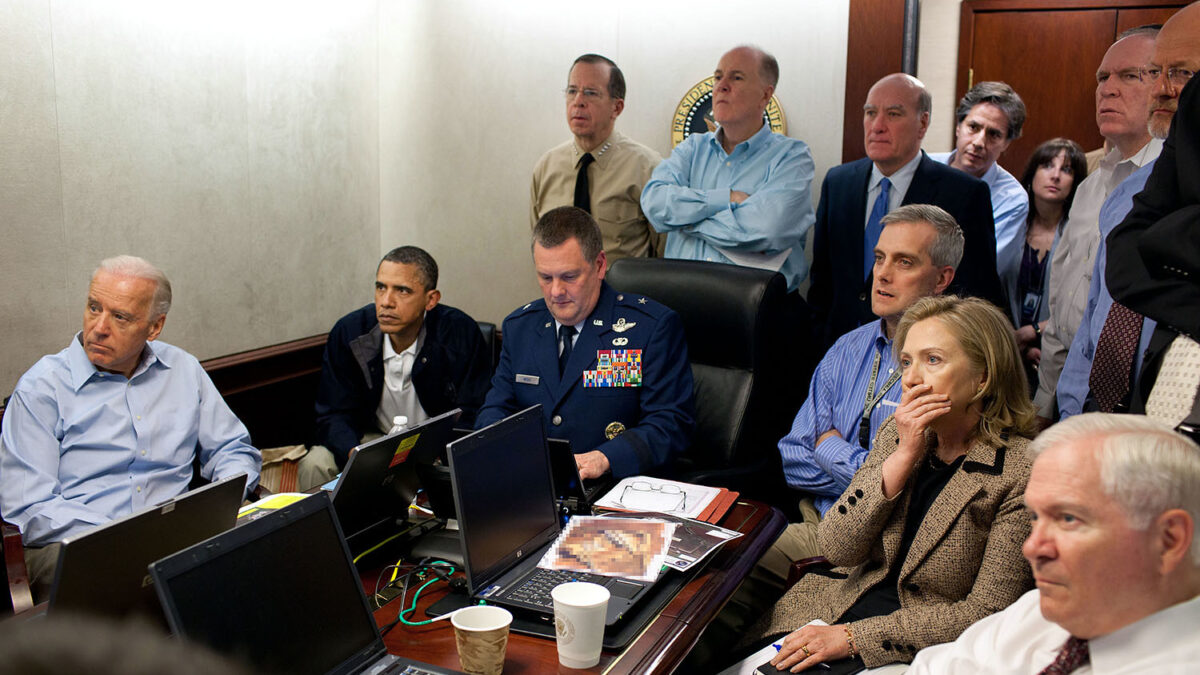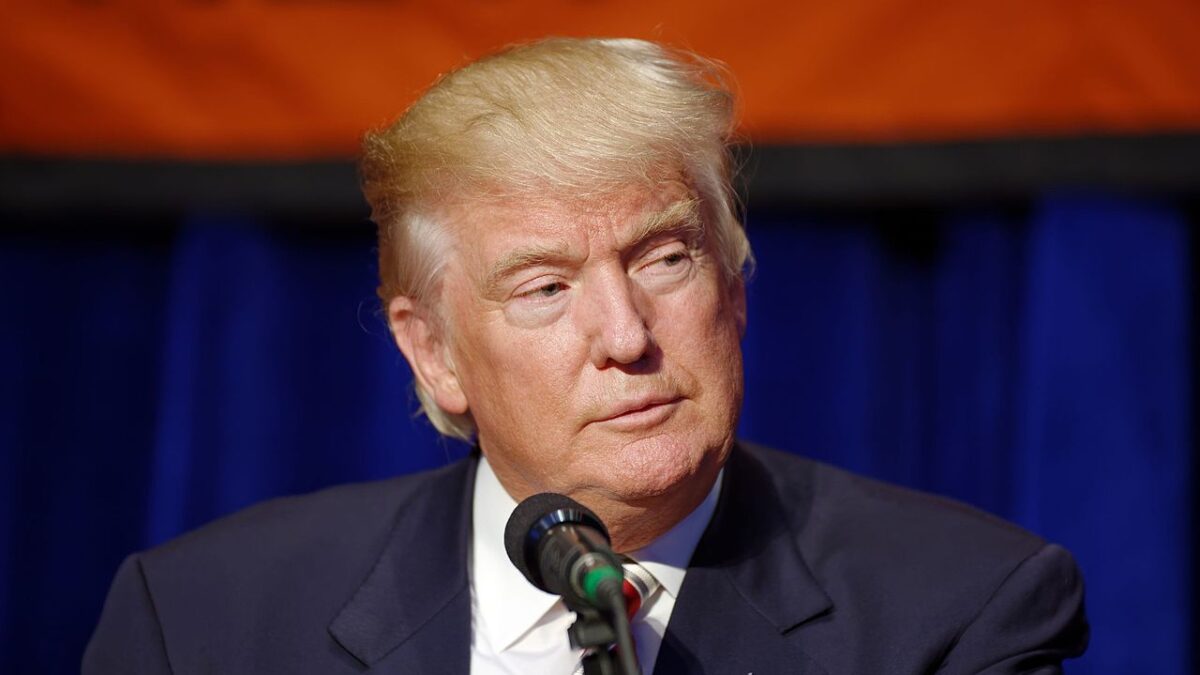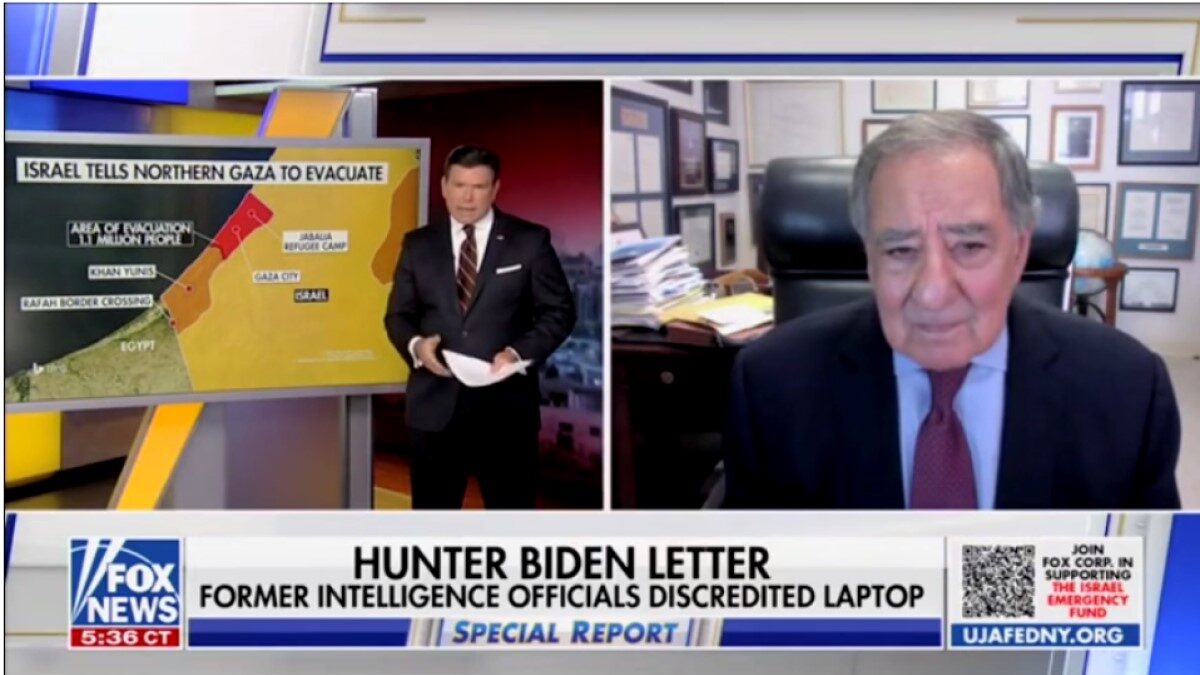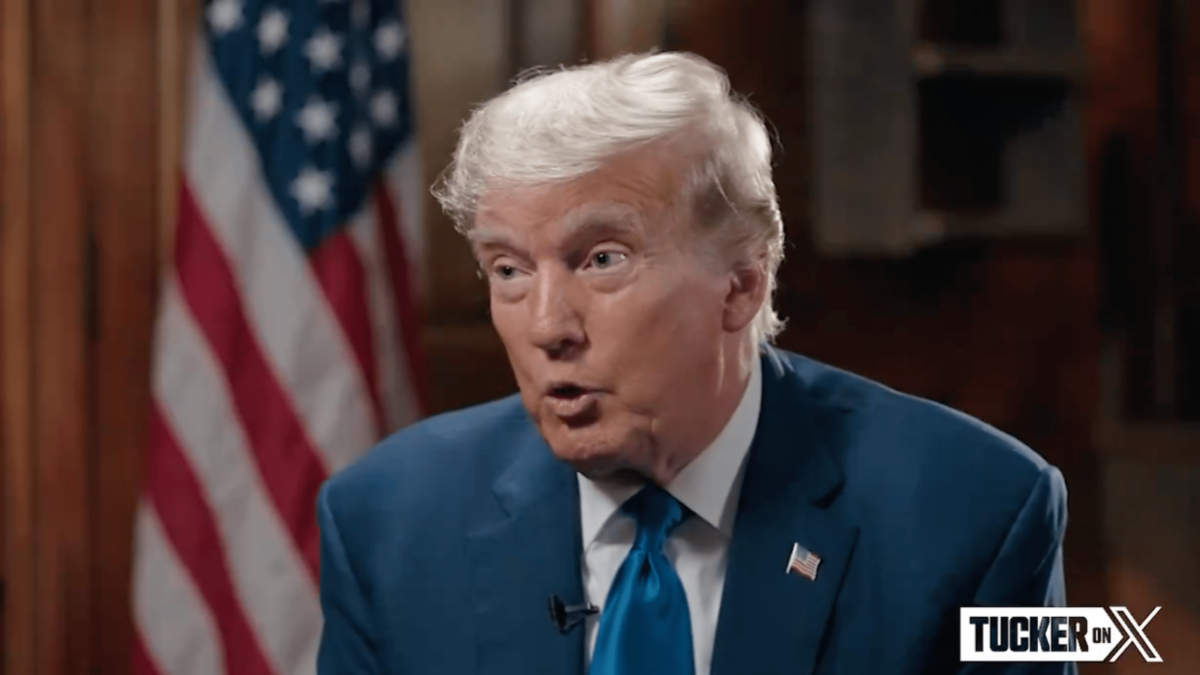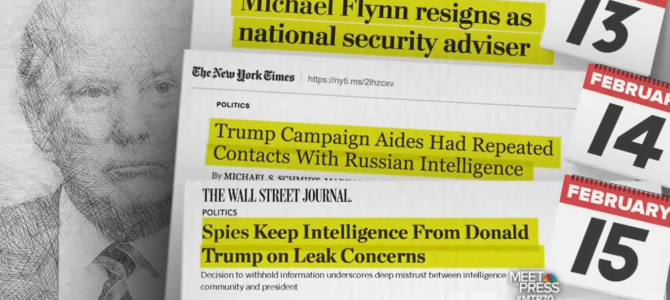
The FBI official who ran the investigation into whether the Donald Trump campaign colluded with Russia to steal the 2016 presidential election privately admitted in newly released notes that a major New York Times article was riddled with lies, falsehoods, and “misleading and inaccurate” information. The February 2017 story was penned by three reporters who would win Pulitzers for their reporting on Trump’s supposed collusion with Russia.
The FBI’s public posture and leaks at the time supported the now-discredited conspiracy theory that led to the formation of a special counsel probe to investigate the Trump campaign and undermine his administration.
“We have not seen evidence of any individuals affiliated with the Trump team in contact with [Russian Intelligence Officials]. . . . We are unaware of ANY Trump advisors engaging in conversations with Russian intelligence officials,” former FBI counterespionage official Peter Strzok wrote of the Feb. 14, 2017 New York Times story “Trump Campaign Aides Had Repeated Contacts With Russian Intelligence.” That story, which was based on the unsubstantiated claims of four anonymous intelligence officials, was echoed by a similarly sourced CNN story published a day later and headlined “Trump aides were in constant touch with senior Russian officials during campaign.”
Strzok’s notes are the latest factual debunking of these stories, which were previously shown to be false with the release of Robert Mueller’s special counsel report finding no evidence whatsoever in support of the Hillary Clinton campaign assertion that Trump affiliates colluded with Russia to steal the 2016 election. A report from the Department of Justice Office of Inspector General on just one aspect of the investigation into Russia collusion — FBI spying on Trump campaign affiliates — also debunked these news reports.
Former FBI Director James Comey admitted under oath in June 2017 that the reporting was “false,” something his deputy director Andrew McCabe privately acknowledged to the White House earlier that year but refused to admit publicly. Efforts by the White House to get the FBI to say publicly what they were admitting privately were leaked to the media in order to suggest the White House was obstructing their investigation. “Obstruction” of the Russia investigation would form a major part of the special counsel probe, and media and Democrat efforts to oust the president.
As for the merits of the explosive New York Times story alleging repeated contacts with senior Russian intelligence officials before the election, Strzok said it was “misleading and inaccurate… no evidence.” Of the unsubstantiated claim that former Trump campaign manager Paul Manafort was on the phone calls with Russian intelligence officials, Strzok said, “We are unaware of any calls with any Russian govt official in which Manafort was a party.” And of the New York Times claim that Roger Stone was part of the FBI’s inquiry into Russian ties, Strzok said, “We have not investigated Roger Stone.”
The Times report, which came hours after National Security Advisor Michael Flynn was ousted due to criminal leaks against him, was one of the most important articles published by major media as part of their campaign to paint Trump as a Russian operative. Widely accepted by the media and political establishment, it did as much to cement the false and damaging Russia conspiracy theory as CNN’s story legitimizing the now-discredited Christopher Steele dossier or the Washington Post’s now-discredited suggestion that Flynn was a secret Russian operative who was guilty of violating an obscure 1799 law called the Logan Act.
The New York Times declined to retract or correct the article three years ago, even after Comey testified it was false, on the grounds that the anonymous sources who fed the false information remained pleased with the initial story.
The damage this false story caused the Trump administration can not be overstated. It’s a story worth recounting here.
Leaks Real, News Fake
“The leaks are real, the news is fake,” President Donald Trump said on February 16, 2017, when ABC News’ Jonathan Karl asked him at a press conference to respond to The New York Times’ explosive report. As other reporters asked more questions related to the New York Times story, he went on to deride the media for writing negative and false stories based on anonymous sources.
The response was roundly mocked by a media class that asserted it was unimaginable that intelligence officials might be leaking anything but the most accurate information. CNN’s Jake Tapper, echoing other Democrat activists, called the press conference “unhinged.”
“I guess I don’t understand,” said CNN’s Jim Acosta, asking, “How can the stories be fake?” Numerous other reporters, presumably all college-educated, publicly claimed to wonder the same thing. The few reporters who were skeptical of the anonymously sourced reports on Russia were also mocked.
If someone associated with an intelligence agency had been granted anonymity to claim without evidence that Donald Trump — Donald Trump — had been a secret Russian agent for decades, or had for some reason paid prostitutes to urinate on a Moscow hotel bed President Obama once slept in, or had arranged clandestine meetings in Prague with top-level Kremlin operatives in a grand dirt-and-dollars-and-election-support scheme, it simply had to be true! Who was to say otherwise? Who was to demand evidence for the absurd conspiracy theory that had, it turned out, been manufactured as part of a Clinton campaign operation?
The response to Trump’s claim that the leaks from anonymous intelligence officials were producing fake news was one of many indicators that U.S. political media would be in no position to think critically or skeptically about whether they were being used by a politically motivated cabal of intelligence officials. The smarter ones might have known they were being used but simply determined they would be more than happy to play an important role in the operation.
Trump was right that the leaks were real but the news was false. Trump campaign aides did not have repeated contacts with Russian intelligence, contrary to what Michael S. Schmidt, Mark Mazzetti, and Matt Apuzzo breathlessly reported. Flynn was not a secret Russian agent. Neither was former Sen. Jeff Sessions.
Published At The Right Moment
The New York Times story was completely false, but the damage it caused the Trump administration was very real.
The false story was published mere hours after intelligence officials had successfully ousted Trump’s National Security Advisor Flynn following weeks of criminal and selectively edited leaks about his benign communications with the Russian ambassador to the United States. CNN “confirmed” the New York Times’ false reporting hours later.
The Wall Street Journal’s Shane Harris and Carol E. Lee reported based on anonymous sources two days later that the CIA was withholding important national security information from Trump because of supposedly legitimate concerns over his ties to Russia. Then-CIA Director Mike Pompeo debunked that reporting immediately. The Washington Post openly talked about the “cloud of Russia” hanging over the Trump administration.
Still, the combination of stories and resulting hysteria was enough to lead Trump to hold a press conference in the East Room to address the growing Russia collusion narrative. It was there he described the “real” leak, “fake” news phenomenon he was dealing with.
As a reminder, Democratic nominee Hillary Clinton and the Democratic National Committee had secretly bought and paid for the conspiracy theory to be manufactured, disseminated in the press, and seeded to the U.S. government. It failed to take off as much as they hoped before the election — and yes, contrary to popular reporting, Clinton’s Russia operation was absolutely deployed before the election, and resurrected by the Clinton campaign in the hours after her stunning defeat.
Then corporate media, humiliated by their failure to accurately report on the 2016 campaign, latched onto the conspiracy theory as a way to explain away their failure. Obama intelligence officials worked to give credence to the theory by leaking about Russia’s long-standing efforts to meddle in U.S. elections and attempting to insinuate Trump’s collusion with same.
At the time the New York Times story ran, it was received credulously by nearly the entire political and media class and received no meaningful pushback from them. “BREAKING: Minutes ago, NY Times bombshell– Trump campaign officials in contact w/Russian intelligence for full year,” tweeted Michael Moore. “Flynn was the appetizer. This is the meal,” tweeted Washington Post columnist Brian Klaas.
“Yes, this is as bad as it looks,” the Democratic National Committee stated. “If not a smoking gun, this is a very hot pistol,” opined Paul Begala. “The trail linking Trump to Russian interference in the election is getting closer and closer,” wrote Robert Reich. “Way beyond Flynn!” wrote an excited Sen. Amy Klobuchar, asking for support for a bill investigating Trump.
“Big NYT scoop,” bragged New York Times editor Cliff Levy. Slate’s Ashley Feinberg said, “it is [expletive deleted] insane that trump is not being impeached.” Rolling Stone senior writer Jamil Smith said, “This story is a mother[expletive deleted]. We have crossed the Rubicon, folks.” “Whoa,” said Twitter enthusiast Bill Kristol.
“It’s all starting to unravel. This won’t be over soon and we must be relentlessly disciplined in how we discuss it,” said Russia hoaxer Susan Hennessey. “There are some important caveats in NYT story on Russia and Trump. But harder to see how Republicans resist probe,” lobbied Los Angeles Times White House reporter Chris Megerian.
“Holy moly,” said the Los Angeles Times’ Matt Pearce. “Oh wow,” wrote the Washington Post’s Abigail Hauslohner. “Boom,” wrote Der Spiegel’s Matthieu von Rohr. “Words just fail me,” said NPR’s Neela Banerjee. “Blockbuster story has been out 24 hrs & Trump has provided no explanation or refutation. Instead attacks leakers,” said Washington Post-enabled Max Boot. “Siren,” wrote Politico’s Blake Hounshell. “Can’t overstate the importance of a diligent, independent press that protects sources,” wrote Mallory Busch about the anonymously — and erroneously — sourced account.
“This is one of the biggest scandals in American history. Where will it end?” asked American Federation of Teachers union president Randi Weingarten. “Are there any constitutional redresses if the President of the US proves to be the Muscovian Candidate?” asked Foreign Policy senior correspondent Michael Hirsh.
The story was tweeted by Rachel Maddow, lead reporter Michael Schmidt, the New York Times’ Nate Cohn, Times columnist Nicholas Kristof, CNN’s Jake Tapper, Times reporter Jeremy Peters, AP bureau chief Michael Tackett, and rabid Democratic activist and CNN White House correspondent John Harwood,
Democrats pounced. “The need for an independent commission to investigate grows more urgent by the hour. Where is the GOP?,” lobbied Sen. Dick Durbin. “When is enough going to be enough for my GOP colleagues to allow a vote on independent investigation of White House?” asked Rep. Susan Davis. “It’s time for a full, in-depth, bipartisan investigation into the Trump administrations ties to #Russia,” wrote Colorado Democrats. “We need full investigation into connection between
@realDonaldTrump campaign & Russia. Too many unanswered questions,” was a popular refrain from House Democrats such as Ann McLane Kuster.
The comments went on and on and on. Each time the story has been debunked, this received little to no coverage from the same corporate media that trumpeted it.
Fighting the False Story Was Treated As Obstruction
Television news the week The New York Times published its false report was non-stop Russia hysteria. It dominated the Sunday shows. When White House chief of staff Reince Priebus told CBS’ John Dickerson “I think that the media should stop with this unnamed source stuff,” The New York Times’ Maggie Haberman — who would also win a Pulitzer for her perpetuation of the false and dangerous Russia collusion hoax — claimed he was demanding that the media stop using anonymous sources.
When the New York Times story came out, FBI Deputy Director Andrew McCabe asked to speak privately with Priebus, according to reporting in Howard Kurtz’s book “Media Madness.” McCabe told Priebus that “everything” in the story was “bulls–t.” Priebus motioned to the bank of televisions showing that the media was taking it seriously and talking about it non-stop. He asked McCabe if he could say something publicly to push back. McCabe said he’d check with his colleagues and get back to him.
McCabe called back to say he couldn’t do anything. Comey also called Priebus to claim there was nothing they could say publicly. (McCabe admitted in his book “The Threat: How the FBI Protects America in the Age of Terror and Trump,” that he declined to say publicly that the report was false.)
What the FBI was willing to do, however, was leak to CNN that the “FBI refused White House request to knock down recent Trump-Russia stories.” That report made it seem like the reporting from The New York Times was legitimate and that the White House was obstructing a legitimate investigation, which, again, became a major theme of the Mueller investigation and attempts to impeach the president.
Comey did offer to brief congressmen and senators that the New York Times report was completely false. When those members said publicly that the New York Times report was false, that too was characterized as something nefarious.
“Trump administration sought to enlist intelligence officials, key lawmakers to counter Russia stories,” was how the Washington Post’s Greg Miller spun that effort. Miller noted that the FBI declined to comment on whether they had told the White House that the New York Times story was completely false. Miller would also win a Pulitzer for his role in perpetuating the Russia collusion hoax.
In his book, McCabe said there was a disinformation campaign in the conservative blogosphere to suggest he had animus toward the president and had gleefully pursued Flynn, both of which he claimed were false. Of the reports, he said, “The stories may be fictional and the information false, but the consequences of this strategy are real.”
Whether or not McCabe’s denials are plausible, how much more powerful is the strategy when it’s not unread blogs but the most powerful media outlets in the world that are willing to spread fictional and false information.


